The global pet insurance market is on track for significant growth, driven by rising pet ownership, increased veterinary expenses, and the humanisation of pets, according to a report by Exactitude Consultancy.
According to the 2024 State of the Industry report by NAPHIA (North American Pet Health Insurance Association), there were 6.25 million insured pets in North America in 2024, up 16.6% from 5.36 million in 2022. Industry projections indicate a compound annual growth rate (CAGR) of 16.45% from 2025 to 2032, reflecting the expanding role of pet insurance in covering veterinary care costs as treatments become more advanced.
The trend towards pet insurance adoption is also linked to a growing awareness of pet healthcare, particularly in developing regions, as veterinary costs increase. Veterinary care, now offering procedures as complex as spinal surgeries (which can exceed $13,000), has made insurance a valuable tool for pet owners managing medical expenses. In response to these trends, insurance providers are developing new policies and expanding coverage options to meet the demand.
Impact of Pet Ownership Surge and Rising Care Costs
The COVID-19 pandemic contributed to a surge in pet ownership, with many first-time pet owners now expressing interest in insurance. Petplan reports that 47% of new pet owners acquired animals during the pandemic, driven largely by remote work and the desire for companionship. As veterinary care costs continue to rise, pet insurance is seen as essential, helping to cover medical expenses for major conditions and protect owners from potentially high costs.
According to NAPHIA’s findings, the frequency of claims has increased, with some of the highest individual claims exceeding $59,000 for serious conditions. This trend underscores the critical role of pet insurance in enabling access to necessary medical care without prohibitive expenses for pet owners.
Market Dynamics and Innovations in Pet Insurance
Driven by innovations in veterinary medicine and a broader range of insurance options, the pet insurance sector continues to evolve rapidly. Increased pet adoptions and the ongoing trend of treating pets as family members have further intensified demand for comprehensive pet insurance policies. Market players are responding by refining policies and tailoring options to cover various needs across animal species, including dogs, cats, horses, and exotic pets.
While pet insurance is primarily marketed for dogs and cats, policies for horses and other pets are also available. Unlike human health insurance, pet insurance is classified as property insurance, meaning owners typically pay out-of-pocket initially and are then reimbursed after submitting claims. This structure allows flexibility in coverage, including a range of policy choices suited to different levels of care and budgets.
In response to rising veterinary costs, particularly for specialised and rehabilitation services, pet insurance has seen greater uptake. The increasing availability of rescue and rehabilitation facilities for animals has further influenced the market. Industry projections estimate that the global pet insurance market could reach $50 billion by 2034, with a CAGR of 15.5%.
Regional Insights: Growth in Europe’s Pet Insurance Market
In 2024, Europe’s pet insurance market led in revenue share, accounting for over 41% of global income due to widespread pet ownership and strong insurance adoption rates. The European Pet Federation (FEDIAF) reported that there were 340 million pets in Europe in 2022, with cats and dogs representing the largest share. Major companies like Petplan in the UK and DFV in Germany are capitalising on this trend, implementing strategies to expand their presence and increase their market share.
The UK’s Association of British Insurers (ABI) noted that pet insurance claims in 2022 reached a record £1 billion (around $1.28 billion), the highest since 2007, demonstrating both the rising costs associated with pet ownership and the growing number of insured pets. France’s market is projected to grow rapidly, driven by increased dog and cat ownership and rising veterinary costs. In France, monthly premiums for pet insurance typically range from $8.61 to $10.79, reflecting the rising demand for accessible, affordable options in the face of increasing pet care expenses.








